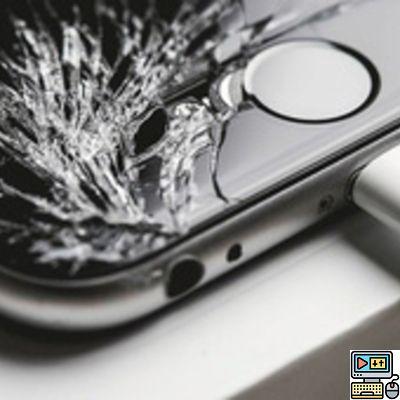 Comment (14)
Comment (14)
How do Apple employees at the Genius Bar know whether an iPhone brought to them for service should be repaired under warranty or not? They rely in part on guides, specially designed and provided by the brand...
Apple's after-sales service policy retains large gray areas; it is generally necessary to rely on the testimonials of employees – on condition of anonymity – to know, in broad outline, the procedures they are asked to follow when returning a product. This time, these are internal Apple documents that have landed in the hands of our colleagues from Business Insider and tell us more about it. Enough to be able to better predict what might happen if you go to an Apple Store with an iPhone to repair.
Titled Visual Mechanical Inspection Guide, this document covers the iPhone 6, 6 Plus, 6s, 6s Plus, 7 and 7 Plus. It defines precisely what points employees of the Genius Bar should check and how they should classify smartphones according to their general condition. An iPhone that is very damaged or equipped with unofficial batteries will, for example, not be supported by Apple's services. A terminal whose Lightning connector is damaged, whose LCD screen is broken or which shows signs of corrosion may be accepted for repair, but the warranty will not apply. A small isolated crack on the screen, a misalignment of the foam surrounding the Facetime camera or a visible defect at the level of the pixels will give them the right to a standard repair under warranty.
The paragraph devoted to the famous "LCI" or "Liquid Contact Indicator" is interesting to consult. It stipulates how employees should react if they detect on first inspection one of these indicators (presence of liquid behind the screen or corrosion of the Lightning port, for example), proving the contact of the smartphone with water. If the customer denies that his phone has been in contact with water or that the possible failure is due to this contact, the employees of the Genius Bar must then open the terminal in order to check the integrity of the various internal indicators. If there are traces of corrosion or if at least one of the indicators has been "triggered", the support of the terminal under warranty will be refused and you will be offered an out-of-warranty repair. On the other hand, the fact that an external indicator is missing on call or is activated does not prevent an iPhone from being repaired under warranty, if the internal indicators turn out to be blank.
We can also read in this document that AppleCare+ customers can potentially be covered, even in the event of severe damage. This extended warranty program effectively covers up to two repairs following damage caused by users, with a deductible of $29 for a broken screen, and $99 for any other degradation.
Business Insider, who was able to question Apple employees about this guide, indicates that according to them, there is a similar document for each major category of products sold by the brand. These guides are regularly updated to take into account comments from employees or specific disputes. In fact, they are mainly used to guide the physical inspection of terminals arriving in after-sales service and to better identify the problems encountered, while determining the cost of repairs. The "Geniuses" interviewed admit that these guides are only finally released in stores in the event of a really unusual problem, or when employees are faced with a situation that is difficult to assess.
We have no more information about the application of these recommendations by the Spanish Apple Stores, even if it seems obvious that such internal documents are provided to the employees managing the after-sales service of the brand in each country. .


























